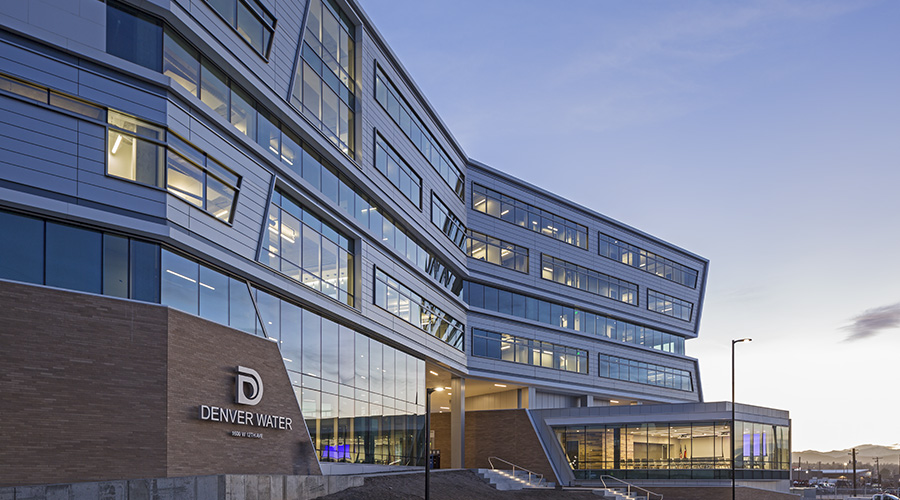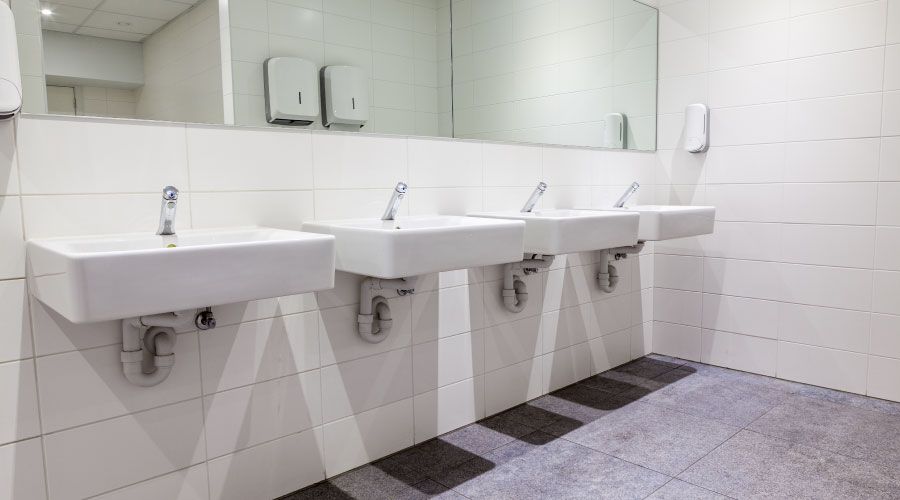An Overview of New Toilet, Hand Dryer and Sensor Technology
There are also more choices when it comes to flush valves and toilets that reduce water use. Zero-water-consumption urinals have become more widespread, and can save up to 40,000 gallons of water per year compared to a standard 1 gallon-per-flush urinal, Vitt Sale says. New urinals are available that use as little as one pint per flush.
Toilets also come in a variety of options, from 1.6 gallons-per-flush models to high efficiency models that use 1.28 gallons per flush, says Breu. Dual-flush models use 1.1 or 1.6 gallons, depending on how the handle is activated.
Adding occupancy sensors is another way to improve the energy efficiency of restrooms. “It makes no sense at all to build a bathroom that doesn’t have an occupancy sensor in it,” says Vitt Sale.
While some facility executives might have concerns about occupancy sensors plunging a restroom into darkness while a stall is still occupied, that concern is easily addressed. In larger facilities, the design may call for the use of more than one occupancy sensor to prevent problems, says Michael Sidlo, principal, MEP Engineering. Properly calibrating the timers on the sensors so they keep the lights on long enough is important too.
Finally, in single-use restrooms, an occupancy sensor can be used to control the ventilation fan to further reduce energy use, provided the sensor has a ten-minute delay, says Laurie Gilmer, associate with Facility Engineering Associates.
Technology improvements have spread to all facets of restroom products. Consider hand dryers. Hand dryers on the market today are available in high-velocity models intended to speed the drying process. Other models allow the velocity to be adjusted, while still other units come built into lavatory sinks.
“What has happened is product designers have seen the writing on the wall and seen the opportunity available and they have met the challenge with a suite of materials designers actually like,” says Bob Kellner, director of design for NELSON’s New York office.
Both hand dryers and touchless towel dispensers are now available in stainless steel versions, experts say, making them a better fit for high-end facilities.
“From a facility management perspective, just make sure you understand what drives the organization and how you can package that message,” says Gilmer. “There are lots of different ways to get the end result of dry hands.”
Also, don’t forget how design and technology impact operational costs. For example, wall-mounted water closets, while not new, make it easier to keep restroom floors clean, says Sam Wood, plumbing designer for Cubellis.
Some facilities that require a very high-end look are using full drywall between stalls instead of partitions. That will have an impact on cleaning costs because, with full drywall, janitorial crews need to enter each stall for cleaning, says Judy Chanik, principal for the workplace solutions team at Cubellis.
Greening The Restroom
Many organizations today are looking for ways to prove they are green. And because restrooms are responsible for a big chunk of water consumption in many facilities, the restroom has become the latest place to tell the green story.
“Sustainability is all about acting responsibly today with a mind for preserving the future,” says Laurie Gilmer, associate with Facility Engineering Associates. “Managing water resources responsibly is a sustainable idea.”
Fortunately, going green in the restroom doesn’t have to come at the expense of image. Nor does it have to break the budget, experts say. “I don’t think having a high-end restroom that is sustainable is mutually exclusive,” says Lois Vitt Sale, director of sustainability for NELSON.
One new countertop product, for example, fuses highly compressed paper in resin in contemporary colors to achieve a rich look, Vitt Sale says.
What’s more, water efficiency will become increasingly important. One federal study predicted that up to 35 states would experience water shortages in the next five years, Gilmer says.
The U.S. Green Building Council is also pushing the frontier on water efficiency. Changes to its LEED rating system mean that facilities undergoing LEED certification will now need to implement water efficiency steps as a prerequisite — a first for LEED.
|
Related Topics:













